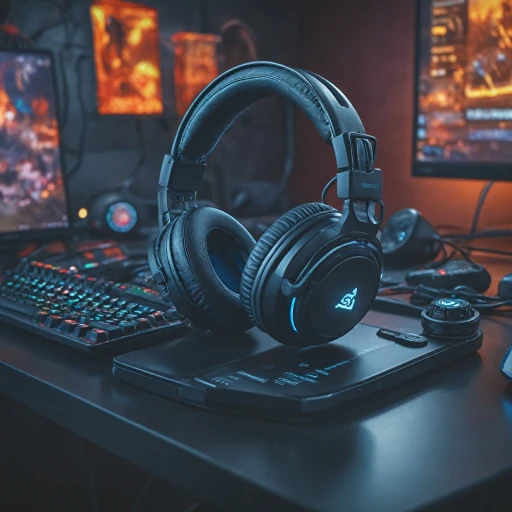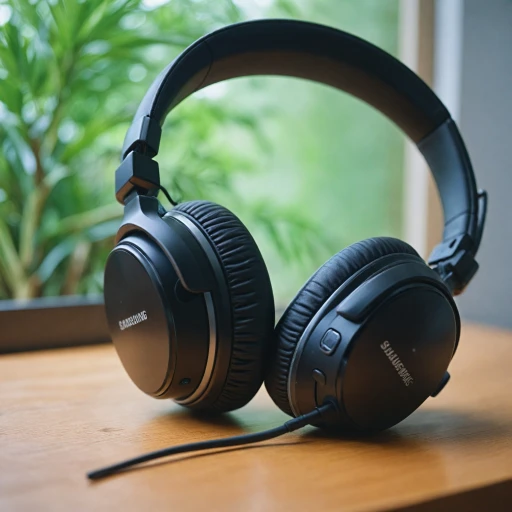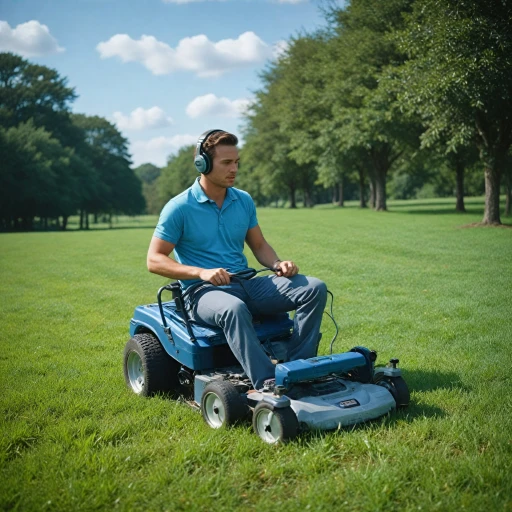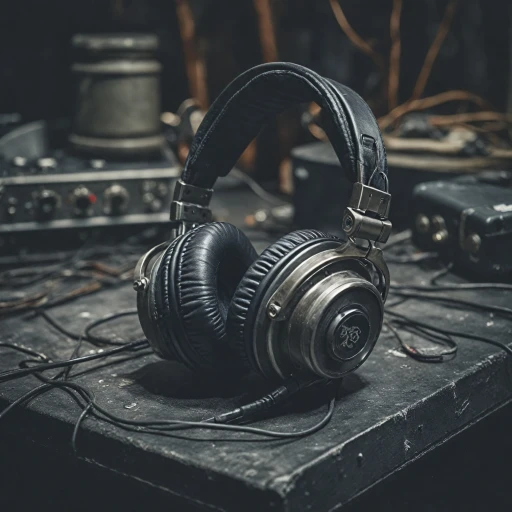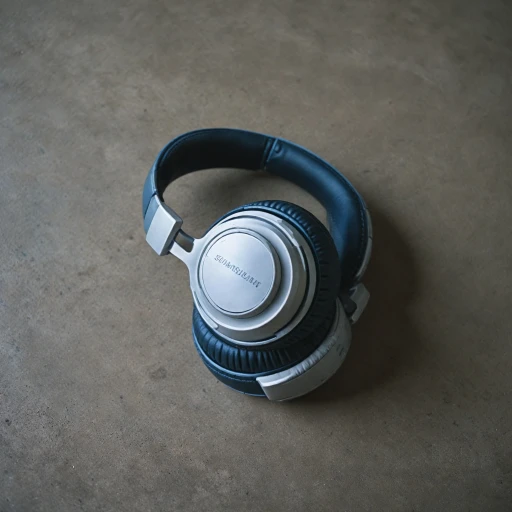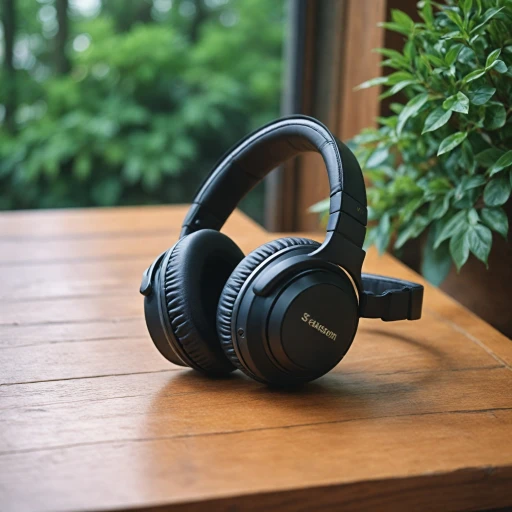
Understanding Drivers in Headphones
Demystifying the Core Components: Headphone Drivers
Understanding the intricacies of headphones begins with getting to know the drivers, which are the heart of sound production. These vital components transform electrical signals into audible sound, and their design significantly influences the audio performance of your device. Headphones typically incorporate various types of headphone drivers, each with unique characteristics. The most common types include dynamic drivers, planar magnetic drivers, and electrostatic drivers. Dynamic drivers are widely used in wireless headphones due to their durability and ability to produce a robust bass response. In contrast, planar magnetic drivers are favored by audiophiles for their precise sound quality, while electrostatic drivers are known for unparalleled clarity albeit in more niche, high-end models. Driver size is another critical factor that impacts sound quality and bass; larger drivers generally move more air, enhancing bass production. However, the choice between different driver configurations doesn't merely end with size. It also involves decisions based on personal music preferences and specific audio needs, such as a preference for enhanced bass or a focus on crisp high-frequency response. While exploring the best headphones, it's essential to consider how these drivers interact with other features such as the design, battery life, and active noise cancellation capabilities, especially if you're using good ear headphones for an immersive listening experience. Understanding headphone drivers paves the way for grasping the complexities involved in noise canceling technologies, and can be especially useful when deciphering an extensive review on the device. Dive deeper into discovering the perfect spot for your noise-canceling headphones which might enhance your next listening session.The Role of Drivers in Noise Canceling
The Significance of Driver Technology in Noise Cancellation
Understanding the impact of drivers in noise-canceling headphones is crucial for audio enthusiasts seeking the best audio quality. Drivers play a pivotal role in shaping the sound that reaches your ears, creating an immersive listening experience. Noise-canceling headphones rely on driver technology to isolate and manage sound effectively. The drivers are responsible for converting electrical energy into sound waves. By doing so, they ensure audio quality, maintain a high frequency response, and enhance the bass response, crucial for robust sound reproduction. The effectiveness of noise cancellation is significantly influenced by the type of drivers employed:- Dynamic Drivers: Utilize electromagnetism, delivering a good bass response and sound quality, often preferred in wireless headphones for their efficiency and battery life.
- Planar Magnetic Drivers: Provide precise audio with less distortion, favored by audiophiles for their excellent sound clarity.
- Electrostatic Drivers: Known for high-definition sound and exceptional treble clarity, though they require more power.
Top Headphones with Multiple Drivers
Top Headphone Models Featuring Multiple Drivers
When it comes to high-quality sound, headphones with multiple drivers are making waves in the audio industry. These advanced designs incorporate several types of headphone drivers to deliver a more comprehensive audio experience, enhancing both bass response and overall sound quality. One leading example is the use of planar magnetic drivers, which are praised for their exceptional bass and superior audio clarity. Another popular choice among audiophiles is the combination of dynamic drivers and electrostatic drivers. This multi-driver configuration capitalizes on dynamic drivers for robust low frequencies while electrostatic drivers handle the mids and highs, delivering a full spectrum of sound. For those who prefer a wireless experience without compromising on audio performance, there are several noteworthy options. Wireless headphones like the Anker Soundcore offer impressive battery life hours alongside active noise cancellation and a unique driver design that doesn’t sacrifice sound quality. As you explore multi-driver headphones, it's crucial to consider how driver size and frequency response impact the auditory experience. Whether you choose headphones for intricate music listening or require noise cancelling for a quieter environment, understanding the role of multiple drivers can inform your decision. For comprehensive advice on selecting the perfect headphones for specific activities, such as lawn mowing, consider reading this Ultimate Guide to Choosing the Best Headphones for Lawn Mowing.Comparing Driver Configurations
Looking at Different Driver Configurations in Headphones
When diving into headphones with multiple drivers, it's crucial to understand how different driver configurations impact the overall sound quality and listening experience. Each type of headphone driver has its unique characteristics and strengths. Recognizing these will help you make a more informed choice when selecting the best headphones for your needs. Let's explore some common driver configurations often found in noise cancelling headphones:- Dynamic Drivers: These are the most common type of headphone drivers. They operate using magnets and a diaphragm to produce sound. Dynamic drivers are popular due to their ability to deliver good bass response and high audio levels without requiring much power. They're frequently seen in wireless headphones as they typically have a better battery life due to their energy efficiency.
- Planar Magnetic Drivers: Known for their excellent sound quality, planar magnetic drivers use a thin diaphragm with magnetic fields on either side to create sound waves. This type of driver delivers exceptional sound clarity and detail, often favored by audiophiles. However, planar magnetic headphones might be heavier, and the ear design could affect comfort during long listening sessions.
- Electrostatic Drivers: These drivers offer an airy and transparent sound stage through the use of a very thin diaphragm placed between two electrically conductive grids. Electrostatic headphones require an external power source, which might be less convenient for mobile use but offers unparalleled sound quality, especially for high frequencies. They are generally considered among the best headphones for a refined audio experience.
- Hybrid Driver Configurations: To capitalize on the strengths of multiple driver types, some headphones incorporate hybrid designs, combining dynamic with either planar magnetic or balanced armature drivers. This configuration aims to deliver an enhanced full-range frequency response, offering both robust bass and crisp highs.
Challenges of Multi-Driver Headphones
Balancing Complexity and Efficiency
In the pursuit of perfect sound, multi-driver headphones promise a richer audio experience by covering a broader frequency range and delivering more precise sound separation. However, the intricate construction of these devices introduces several challenges that can impact the overall quality and practicality. One of the primary concerns with multi-driver headphones is achieving the right balance among drivers. While more drivers can enhance the bass response and offer clear high frequencies, it's crucial to ensure they are perfectly synchronized. Misalignment in driver size and type, such as dynamic or planar magnetic drivers, can lead to inconsistencies in sound quality. This means, despite the potential for superior audio, the quality isn't guaranteed unless precision in driver configuration is achieved. The complexity of multi-driver designs also affects the weight and form of the headphones. Additional components often translate to a heavier design, which might not be ideal for all listener preferences, especially those who prioritize comfort during long listening hours. Wireless headphones, with their need for batteries, can further exacerbate this issue, impacting battery life and the overall usability. Moreover, active noise cancelling capabilities add another layer of complexity. Integrating noise cancellation technology in multi-driver setups requires more advanced engineering to avoid interference within the delicate driver system. Misdirection here could compromise both noise cancellation effectiveness and sound fidelity. Also, multi-driver setups might require advanced tuning, often needing expert adjustment to match the listener's specific audio preferences. Those accustomed to the best headphones on the market often seek specific bass, midrange, and treble levels, and achieving this with a complex audio setup necessitates attention to detail and sometimes, manual adjustment. Assessing whether multi-driver headphones are the right choice often comes down to individual priorities in sound quality, portability, and budget. For audiophiles seeking refined listening experiences with an emphasis on quality music playback across multiple genres, the investment could indeed prove valuable. However, for general listeners, simpler headphones with fewer drivers but efficient noise cancellation might offer more satisfactory results without the need for constant adjustment and tuning.Choosing the Right Headphones for You
Making the Right Headphone Choice for Your Needs
When it comes to selecting the best headphones, it's not just about the number of drivers they have. Understanding the role of headphone drivers can significantly impact your audio experience. Drivers are key components in headphones and influence everything from bass response to sound clarity.
For those seeking excellent sound quality, it is crucial to consider the type and quality of drivers in the headphones. Dynamic drivers and planar magnetic drivers each have unique benefits, with dynamic drivers typically providing more vibrant bass and planar magnetic drivers offering more balanced audio details. Electrostatic drivers, while less common in consumer headphones, are known for their supreme clarity and are favored by audiophiles.
The design and build quality of the headphones also play a critical role. Over-ear headphones often deliver better noise cancellation and sound isolation, enhancing your listening experience. Wireless headphones provide the convenience of movement, but it's important to consider battery life if you often listen on the go. A pair of headphones with good battery life hours ensures uninterrupted listening.
Listening habits and the environment in which you use your headphones can influence your choice. Active noise cancelling features are essential if you often find yourself in noisy environments. Noise cancellation technology, especially in high-frequency responses, can dramatically improve your listening environment, allowing you to enjoy your music with enhanced detail.
For those who prioritize robust bass, some headphones are specifically designed to amplify bass response. Reading reviews and comparing products tailored to your audio preferences can guide you toward the best headphones for your needs.
Finally, be sure to take into account any reviews and product feedback. A well-reviewed headphone like the Anker Soundcore is often a good indicator of quality. Ultimately, the key to choosing the right headphones is balancing between what you value most in audio quality and practicality based on your lifestyle.

